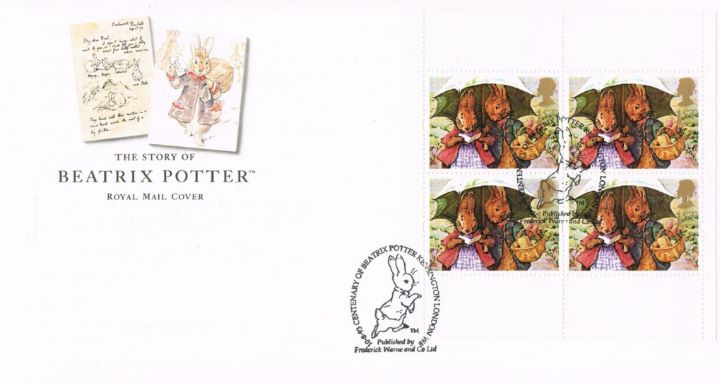

National Trust, London Warne and company photograph.

Victoria and Albert Museum Warne and Company photograph. Detail of sketch with Painted Lady butterfly by Potter, 1887. Potter and her dog Spot at Dalguise House, near Dunkeld, Perthshire, Scotland, in a photograph of 1880. Victoria and Albert Museum, London photograph courtesy of Frederick Warne and Company, London. Victoria and Albert Museum, Linder Trust Warne and Company photograph. Since translated into more than a dozen languages, from Afrikaans to Japanese, it may well be the most popular children’s story of all time.

The simple but endearing story of a mischievous young rabbit’s adventures in a forbidden British garden brought Potter lasting literary fame. Seven years later Potter asked him if she could borrow the letter, and just before Christmas 1901 The Tale of Peter Rabbit first appeared in print. They lived with their mother in a sand bank under a big fir tree… “1 So enthralling was the tale that followed, and so beguiling the sketches that accompanied the text, that Noel Moore put the letter away to read again and again. “My dear Noel, I don’t know what to write to you, so I shall tell you a story about four little rabbits whose names were-Flopsy, Mopsy, Cottontail, and Peter. It was the very lack of news that inspired the extraordinary content of her letter. Inspired by a real rabbit of the same name, Peter Rabbit’s fictional character was born in a letter Potter wrote in 1893 to the five-year old son of her friend and former German teacher, Annie Carter Moore. Although it is Peter Rabbit with whom most associate the cottage and its one-time owner, Potter created Peter long before she moved to the country. To the eighty thousand visitors who traipse through the tiny cottage annually-some from as far away as Japan-Hill top represents a nostalgic return to the comforting childhood world of Jemima Puddle-Duck, Squirrel Nutkin, and the many other animals whose adventurous lives filled the pages of Potter’s books. Potter’s house Hill Top, near Sawrey, England. VII), the two-hundred-acre farm where Beatrix Potter lived for the last thirty-eight years of her life, is so overwhelmed with visitors each summer that the National Trust, which has owned and operated the property since Potter’s death in 1943, has imposed a limit of eight hundred visitors a day to avoid overcrowding. At a time when many house museums have difficulty keeping their doors open, a small cottage in the English Lake District can barely manage to close its doors at all.


 0 kommentar(er)
0 kommentar(er)
